Those Who Wait on the Lord Shall Rejoice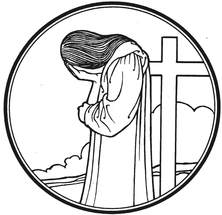
Jubilate means “Make a joyful shout,” from the first verse of Psalm 66. This Psalm expresses the joy and thanksgiving that are the response of faith to God’s creative and redemptive acts. This joyful Psalm attributes praise and glory to God alone, for it is He that “turned sea into dry land” to deliver His people form bondage through the Red Sea, and it is He that keeps our soul among the living,” delivering His people from bondage to sin and death by the waters of Holy Baptism. He alone is worthy of our worship and prayers. “But certainly God has heard me; He has attended to the voice of my prayer. Blessed be God, who has not turned away my prayer, nor His mercy from me!”
The people of God are pilgrims and sojourners in this world, looking ahead to a destination yet to come. We are those who wait on the Lord. But, Jesus tells us that the wait is just a little while. Though you must experience sorrow for a time, though you must live as strangers in a world that is at enmity with Christ, yet your sorrow will be turned to joy when He returns. The little while of weeping shall be replaced with an eternity of rejoicing in the presence of Christ the crucified and risen Savior.
0 Comments
The Good Shepherd Cares for His Sheep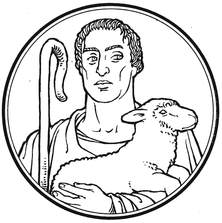
Our Lord Jesus is the Good Shepherd (John 10:11–16). He is not like the hireling, who cares nothing for the sheep and only for himself, who flees when he sees the wolf coming. Rather, Jesus is the Good Shepherd who seeks out His scattered sheep to deliver them (Ezek. 34:11–16). He gathers them and feeds them in rich pasture. He binds up the broken and strengthens the sick. He lays down His life for wandering and wayward sheep. On the cross, Christ bore in His body the attacks of the predators of sin and death and the devil for you that you might be saved. He now lives to restore your soul in the still waters of baptism, to lead you in the paths of righteousness by the voice of His Gospel, to prepare the table of His holy supper before you, that you may dwell in the house of the Lord forever (Psalm 23). “For you were straying like sheep, but have now returned to the Shepherd and Overseer of your souls” (1 Peter 2:25).
Misericordia Domini means “the goodness of the Lord.” These are words that end the Historic Introit (meaning, “entrance;” a Psalm or verse sung as the pastor entered the church) for the day, Psalm 33:5. In Latin, verse 5 ends “misericordia Domini plena est terra”—“the earth is full of the goodness of the Lord.” Psalm 33 proclaims the joy and awe of the Christian at the miraculous grandeur of the creative and redemptive acts of Our Lord. Misericordia Domini is frequently called “Good Shepherd Sunday” because the Gospel reading is John 10:11-16, where our Lord identifies Himself as our Good Shepherd. St. Gregory the Great once said, ““The Good Shepherd has laid down his life for his sheep in order to change his body and blood into a sacrament for us, and to satisfy the sheep he had redeemed with his own body as food.” Christ as our Shepherd is also the theme of the Old Testament (Ezekiel 34.11 -16) and the Epistle (1 Peter 2.21-25).
The Wounds of Christ Give Us Life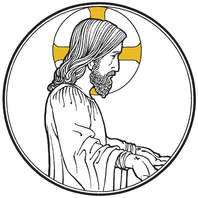
Quasimodo Geniti is the Latin name for today, which means, “like newborn babes.” [It’s actually three words in Latin: Quasi modo geniti]. These words of 1 Peter 2:2 begin the Introit for the First Sunday after Easter: “Like newborn babies, crave the pure milk of the Word so that by it you may grow up with the result being salvation.” Historically, those preparing for baptism and confirmation would attend and observe the Easter Vigil, during which they would be baptized and received into the Holy Christian Church after dark on Holy Saturday. These new Christians would continue in their instruction “as newborn babes” in the faith. It is the Word of God through the preached Word and the Sacraments that sustain the Christian. Would that we all might become as “little children” (Mt. 18:3), with child-like faith believing the Word, and, as newborn babies, “crave the pure milk of the Word,” that we too may “grow up,” and thus be prepared for the “meat”—the deeper truths of the faith and the mysteries of God (1 Cor. 3:2, 4:1; Heb. 5:12-14).
Christ’s Resurrection Brings Us Life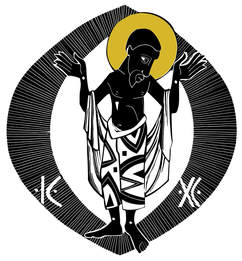
“Christ, our Passover lamb, has been sacrificed” (1 Cor. 5:7). By the shed blood of Christ, the Lamb of God, eternal death has passed over us. Now we pass with Christ through death into life everlasting. For Christ the crucified One is risen! The stone has been rolled away from the tomb, revealing that the tomb could not hold Him (Mk. 16:1–8). Now our Redeemer lives eternally to save us from sin and Satan and the grave, and we can live in the sure hope of our own bodily resurrection with Christ. “After my skin has been thus destroyed, yet in my flesh I shall see God” (Job 19:26). Feasting on the living Christ, who is our meat and drink indeed, we boldly say: “O death, where is your victory? O death, where is your sting?…But thanks be to God, who gives us the victory through our Lord Jesus Christ” (1 Cor. 15:54–55, 57).
The Paschal Candle is a special candle used at every service during the Easter season and at baptisms and funerals year-round. The Paschal Candle—rededicated last evening in our Easter Vigil service—symbolizes the resurrection victory over the darkness of sin and death. It emphasizes the presence of the resurrected Christ and the link between a believer’s baptism and the resurrection (Romans 6). The name Paschal comes from the Greek, pascha. Before the time of Christ, this word was used for Passover; after Christ, Christians took to using the word when referring to the Festival of the Resurrection (The term Easter came into use in later centuries). On the Paschal Candle are nails, symbolizing the wounds of Christ; a cross, the means by which we are saved through our baptism; two Greek letters, an Alpha [Α] and an Omega [Ω], which remind us of Jesus’ words in St. John’s Revelation (1:8; 22:13), and that he is the beginning and the end; and finally, the candle has the current year, the year of our Lord (“anno domini"; A.D.) 2017. Throughout the fifty days of Easter, the Paschal Candle traditionally stands near or in front of the altar as a symbol of resurrection. It is lighted for each service and is traditionally extinguished after the reading of the Gospel on Ascension. The Paschal Candle is of substantial size so its important symbolism speaks clearly. Even the stand in which it sits is of great size. As the Ad-vent candles bring wonderful meaning to the celebration of Advent, so the Paschal Candle is intended to add meaningful symbolism to our celebration of Easter, Baptisms, and Christian funerals.
Maundy Thursday: Service of Word & Sacrament
Holy Saturday: Vigil of Easter
A vigil is a service of Scripture readings and prayers in which believers vigilantly and eagerly wait and watch for the celebration of the Savior’s deliverance. The Easter Vigil is the most well-known and historic of the Church’s vigils. In fact, in its general structure, it is one of the most ancient services of the Christian Church. Early records indicate that it may have been celebrated in Jerusalem already by the second century, and from there it soon spread to the rest of the church.
From its beginnings, the Easter Vigil was closely connected to Holy Baptism. In the pagan world, a conversion to Christianity meant making a clean break from one’s former lifestyle. It also meant facing difficult times, perhaps even death. The instruction of adults was, therefore, intensive and thorough, practical as well as intellectual. The instruction intensified during the season of Lent, as catechumens pondered not only the Savior’s battle with evil, but also their own battle with Satan and his forces. At the Easter Vigil converts were baptized, confirmed, and received their first communion. The Easter Vigil consists of four parts: the Service of Light, the Service of Lessons, the Service of Baptism, and the Service of Holy Communion:
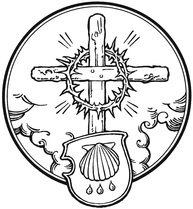 Last week, on Tuesday, November 1, the Church celebrated All Saints' Day. Today, we observe this feast. To “observe” a feast means we celebrate the feast day in a Divine Service not held on the specific day the feast is celebrated. The Feast of All Saints’ is the most comprehensive of the days of commemoration, encompassing the entire scope of that great cloud of witnesses with which we are surrounded (Hebrews 12:1). It holds before the eyes of faith that great multitude which no man can number: all the saints of God in Christ––from every nation, race, culture, and language––who have come "out of the great tribulation...who have washed their robes and made them white in the blood of the Lamb" (Revelation 7:9, 14). As such, it sets before us the full height and depth and breadth and length of our dear Lord's gracious salvation (Ephesians 3:17-19). It shares with Easter a celebration of the resurrection, since all those who have died with Christ Jesus have also been raised with Him (Romans 6:3-8). It shares with Pentecost a celebration of the ingathering of the entire Church catholic–in heaven and on earth, in all times and places––in the one Body of Christ, in the unity of the Spirit in the bond of peace. Just as we have all been called to the one hope that belongs to our call, "one Lord, one faith, one baptism, one God and Father of all, who is over all and through all and in all" (Ephesians 4:4-6). And the Feast of All Saints shares with the final Sundays of the Church Year an eschatological focus on the life everlasting and a confession that "the sufferings of this present time are not worth comparing with the glory that is to be revealed to us" (Romans 8:18). In all of these emphases, the purpose of this feast is to fix our eyes upon Jesus, the author and perfecter of our faith, that we might not grow weary or fainthearted (Hebrews 12:2,3).
Forty days ago, the darkness of Lent was dispelled by the light of Easter. For forty days, the Church has cried, “Christ is risen! He is risen indeed!” But forty days after Jesus rose from the dead, he departed from his disciples and was enthroned in glory in heaven. From heaven he rules all things as our Lord and King. Today we celebrate the day he ascended (“went up”) to glory. But he promised not to leave his disciples alone. He promised to send them the Holy Spirit. They waited ten more days, and then on the Festival of Pentecost (“fiftieth day”) they saw Jesus’ promise made good. Next Sunday, we will celebrate that 50th day, the day of Pentecost.
There are some saints in particular whose lives on earth are so closely connected with the earthly life and ministry of Jesus that their stories are literally part of the Gospel itself. Perhaps the most obvious examples would be the apostles and evangelists. In the history of the church, including the history of our Lutheran Church, the commemorations of these saints have been observed with special distinction—always to the praise and glory of Christ Jesus and His Gospel. These days are really treated as “Feasts of Christ,” that is to say, as days when we remember, celebrate, and give thanks for the life that our Lord Jesus Christ lived for us in the flesh. For these reasons, it is appropriate to observe these “Feasts” with the Sacrament of the Altar, in which the Word-made-flesh draws close to us and gives himself to us in much the same way that he came and lived among the apostles and other disciples in the New Testament. May 1 has been kept as the feast day of St. Philip and St. James since A.D. 561 when on that date, the supposed remains of the two saints were interred in the Church of the Apostles in Rome. But the Church celebrates these saints today not because we have a piece of their earthly bodies to worship; rather, we follow the example of Holy Scripture in remembering those whom God has called to be his own, in whom he has demonstrated his grace of forgiveness and his gift of life (cf. Hebrews 11; Matthew 26:13). Today we give thanks to God for the gift of apostles—specifically Philip and James—who served his church as leaders and missionaries.
Jesus had told them that he was leaving. Today, John gives us a picture of it, and what it will be like when we join Jesus there. St. John gives a vision of the new heaven and the new earth, the home beautifully crafted and lovingly prepared for the Bride of Christ. Here there is nothing of the old sin, death and pain. All is new for all is done. So now, even in the face of persecution, love led the apostles to boldly proclaim the message of the risen Christ. Filled with joy and the Spirit, Christ’s love compels us to proclaim the same Word of Life.
The paradox of Christ is that he is both Lamb and Shepherd. He saves his flock, by shedding his blood as the Lamb sacrificed for sin. This is the Good Shepherd we needed: God in the flesh, sacrificed for our atonement. But now, washed in his blood, the white robed host is led by the Shepherd-Lamb to the springs of living water and a life where everything that once was wrong is made right forever.
|
Archives
February 2019
Categories
All
|
||||||||||||||||||||||||||||||||||||||||||||||||||||||||||||

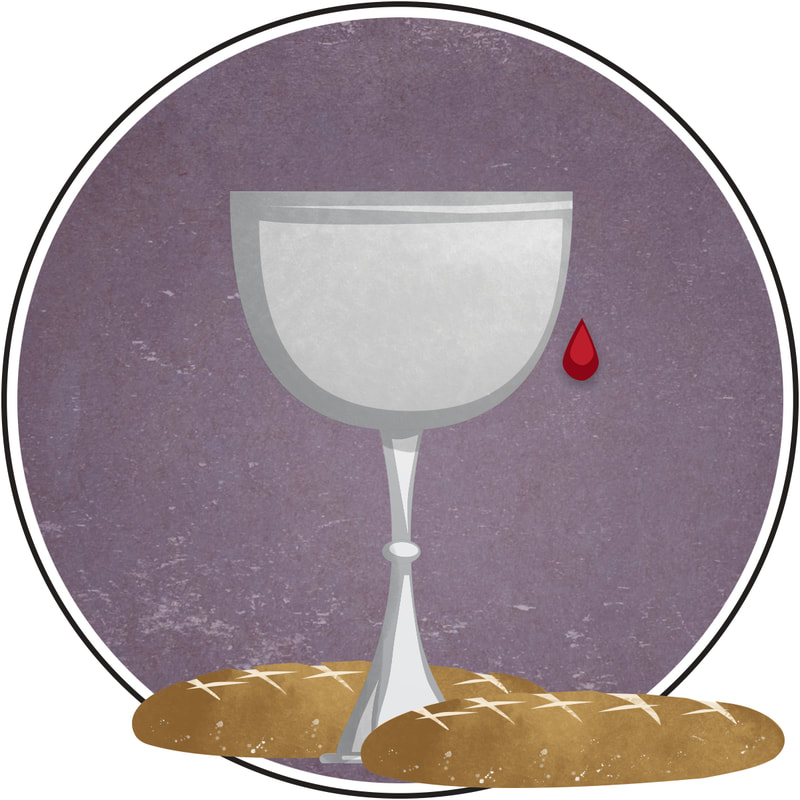
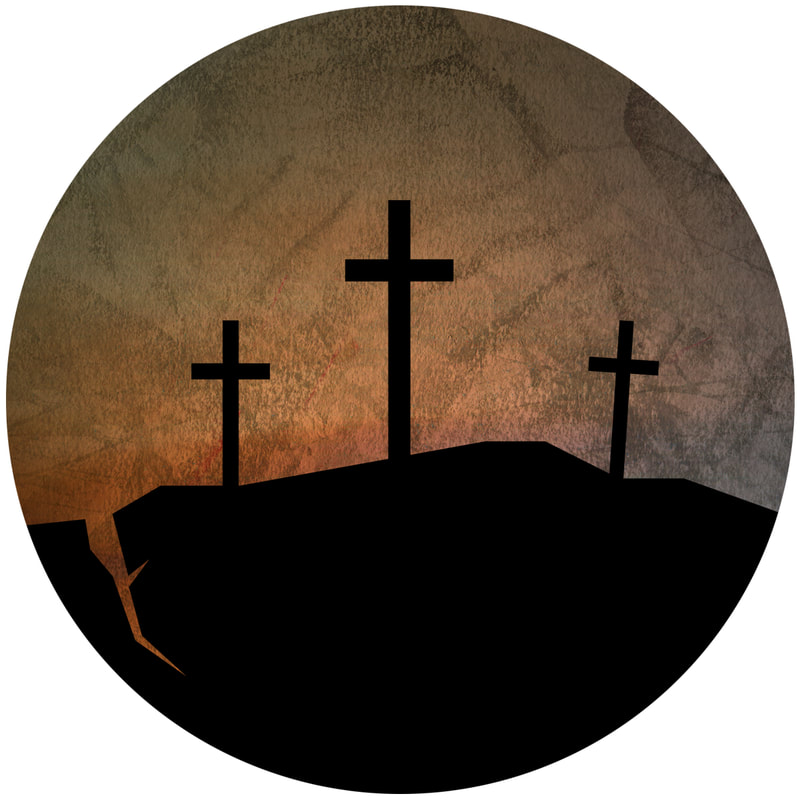
 RSS Feed
RSS Feed
